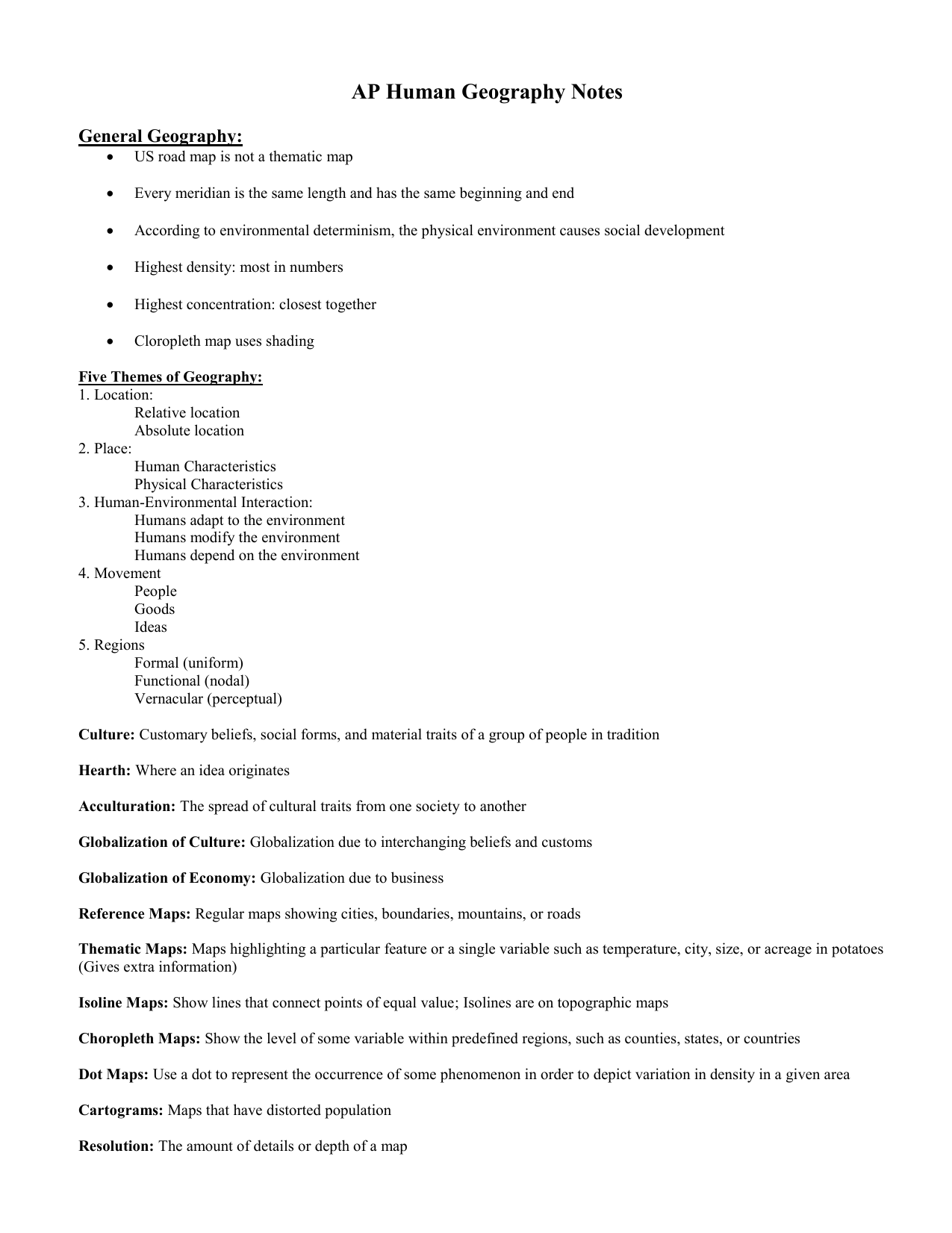
Friction of distance: A measure of how much absolute distance affects the interaction between two places.Formal region: Definition of regions based on common themes such as similarities in lan- guage, climate, land use, etc.Expansion diffusion: The spread of ideas, innovations, fashion, or other phenomena to surrounding areas through contact and exchange.Environmental geography: The intersection between human and physical geography, which explores the spatial impacts humans have on the physical environment and vice versa.Earth system science: A systematic approach to physical geography that looks at the interaction between Earth’s physical systems and processes on a global scale.Dot maps: Thematic maps that use points to show the precise locations of specific observations or occurrences, such as crimes, car accidents, or births.Distance Decay Effect: The decrease in interaction between two phenomena, places, or people as the distance between them increases.Cultural landscape: The human-modified natural landscape specifically containing the imprint of a particular culture or society.Cultural ecology: Also called Nature-Society Geography, the study of the interactions between societies and the natural environments in which they live.Coordinate system: A standard grid, composed of lines of latitude and longitude, used to determine the absolute location of any object, place, or feature on Earth’s surface.Contagious diffusion: The spread of a disease, an innovation, or cultural traits through direct contact with another person or another place.Connectivity: The degree of economic, social, cultural, or political connection between two places.Complementarity: The actual or potential relationship between two places, usually referring to economic interactions.Cognitive maps can include knowledge of actual locations and relationships among locations as well as personal perceptions and preferences of particular places. Cognitive map: An image of a portion of Earth’s surface that an individual creates in his or her mind.Choropleth map: A thematic map that uses tones or colors to represent spatial data as average values per unit area.Cartography: The theory and practice of making visual representations of Earth’s surface in the form of maps.

Cartograms: A type of thematic map that transforms space such that the political unit with the greatest value for some type of data is represented by the largest relative area.Breaking point: The outer edge of a city’s sphere of influence, used in the law of retail gravitation to describe the area of a city’s hinterlands that depend on that city for its retail supplies.Azimuthal projection: A map projection in which the plane is the most developable surface.


Since the first scholars began studying geography some 3,000 years ago, the field has matured into an important and wide-ranging area of academic and applied research. Human geography is the study of human activities on Earth’s surface.


 0 kommentar(er)
0 kommentar(er)
